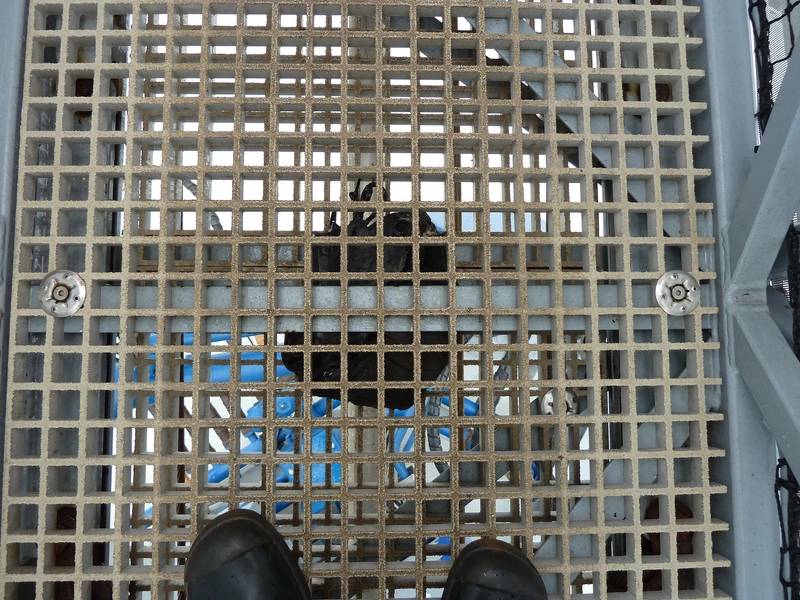
Shell and Ampelmann Operations have been fined a combined total of more than £1.2 million after an offshore worker’s feet were crushed while walking along a gangway over the North Sea.
The U.K. Health and Safety Executive (HSE) prosecuted the two companies following the October 2017 incident off the Norfolk coast.
The worker, Martin Hill from Norwich, then 63 years old, was part of a group of maintenance workers being transferred on the Kroonborg support vessel toward Shell’s Galleon PG offshore gas rig when the incident took place. The transfer went ahead in conditions of high wind and heavy seas, when it should not have, HSE said.
Used for accessing offshore wind farms and rigs, motion-compensated, or ‘walk to work’, gangways have a combined mechanical and computerized system to enable them to continue to provide a steady pathway for people transferring from ship to rig or turbine. The distance between the ship and the rig changes with the sea and vessel movement so any such gangway must telescope in and out to keep a full bridge.
When the injury occurred, Hill was making his way along gangway from the support vessel toward the rig before sunrise. Although there was some artificial lighting, there was not enough of it in the right places, an investigation found. Both of Hill's feet got trapped as the gangway telescoped together. The serious nature of the injuries meant he had to be airlifted to hospital.
Now 68, Hill said, “Both of my feet got stuck between the two sections of the gangway and consequently my feet got very badly crushed. When they got the bridge off me I passed out and next thing I knew I was on the medical center on the ship. Most of the bones in my feet were broken and most of the skin was pulled off.”
 Hill’s trapped boot in the gangway (Photo: HSE)
Hill’s trapped boot in the gangway (Photo: HSE)
The HSE investigation found that people using the Ampelmann-designed and owned gangway were not sufficiently protected from the risks of entrapment and trip injury at the moving step. The agency said Ampelmann failed to take all reasonably practicable steps to reduce the risk of people’s feet being trapped at the sliding step. Justice Jeremy Johnson said that, though some efforts were made, “There were some basic errors which persisted over a long time.”
Justice Johnson said of Shell’s instructions to the staff conducting transfers “were inconsistent and confusing and spread across several documents. They were not understood by those operating” the gangway transfer system. In addition, Shell also failed to ensure that lighting was in accordance with long-standing HSE guidance. Justice Johnson said in assessing Shell’s culpability, “The problems were in place for a considerable time and were far from minor or isolated.”
Shell U.K. Limited, of York Road, Lambeth, London, pleaded guilty to breaching Section 3(1) of The Health and Safety at Work etc. Act 1974. The company was fined £1,031,250 and ordered to pay £247,000 in costs at Chelmsford Crown Court on December 14, 2023.
Ampelmann Operations (UK), of Waterloo Quay, Aberdeen, pleaded guilty to breaching Section 3(1) of The Health and Safety at Work Act 1974. The company was fined £206,250 and ordered to pay £247,000 in costs at Chelmsford Crown Court on December 14, 2023.
HSE inspector John Hawkins said, “Offshore equipment, whether used in the course of hydrocarbon extraction, like at the gas rig in this case, or in harvesting renewable energy, such as at a wind turbine, requires maintenance, and maintenance requires reliable and safe access.”
“Walk to work gangways have an important contribution to make towards providing reliable and safe access, but their design and operation must ensure workers are protected from the risk of needless entrapment and serious injury.”
“The sentences passed reflect the importance of specialist companies making sure that all aspects of the equipment they design and deploy are in fact safe, rather than just assumed to be safe. It is important operating companies continually challenge themselves, through effective audit and review of their procedures, to make sure their safety management systems are robust enough and that the safety instructions generated are clear, consistent and in accordance with guidance.
“To have workers exposed to a risk of injury when required to do something as basic as walking to work over a gangway does not reflect the standards expected.”
Hill, a grandfather of eight, said he now struggles to go on walks and carry out simple DIY tasks as a result of his injuries.
“I have used magnetic therapy to help with my injuries which has been a big help,” he said. “I am not 100% now, my feet will play up if I try and do DIY when there are steps or ladders involved, or if I go for a reasonable walk. I like to think it didn’t affect me mentally but it did – I haven’t returned to offshore work after the incident.”